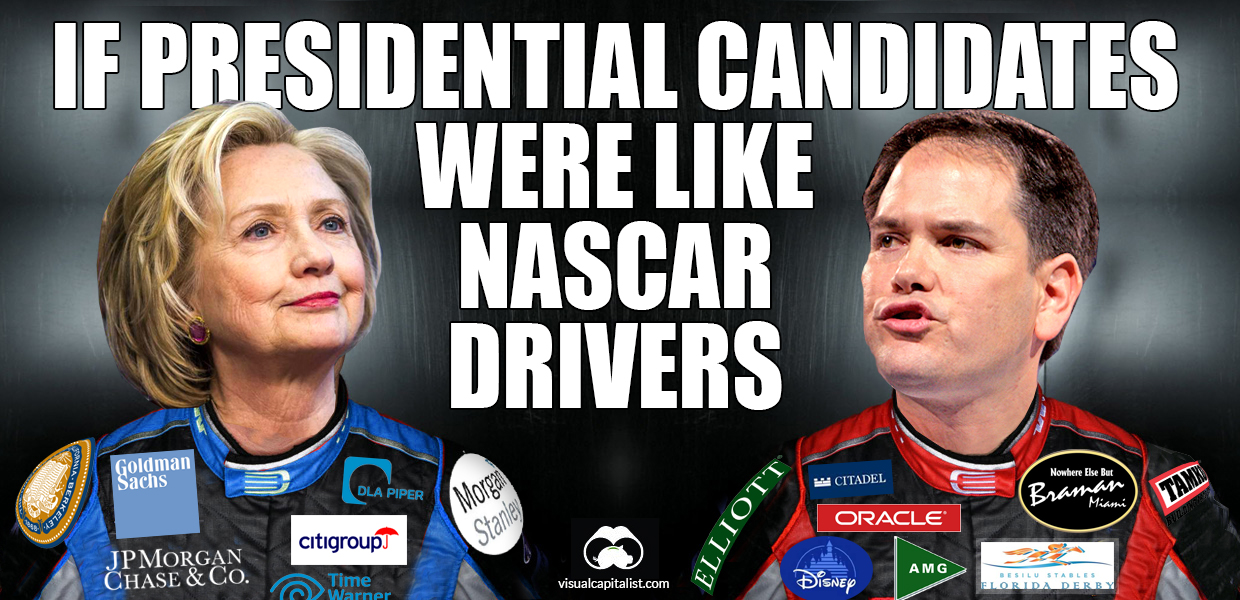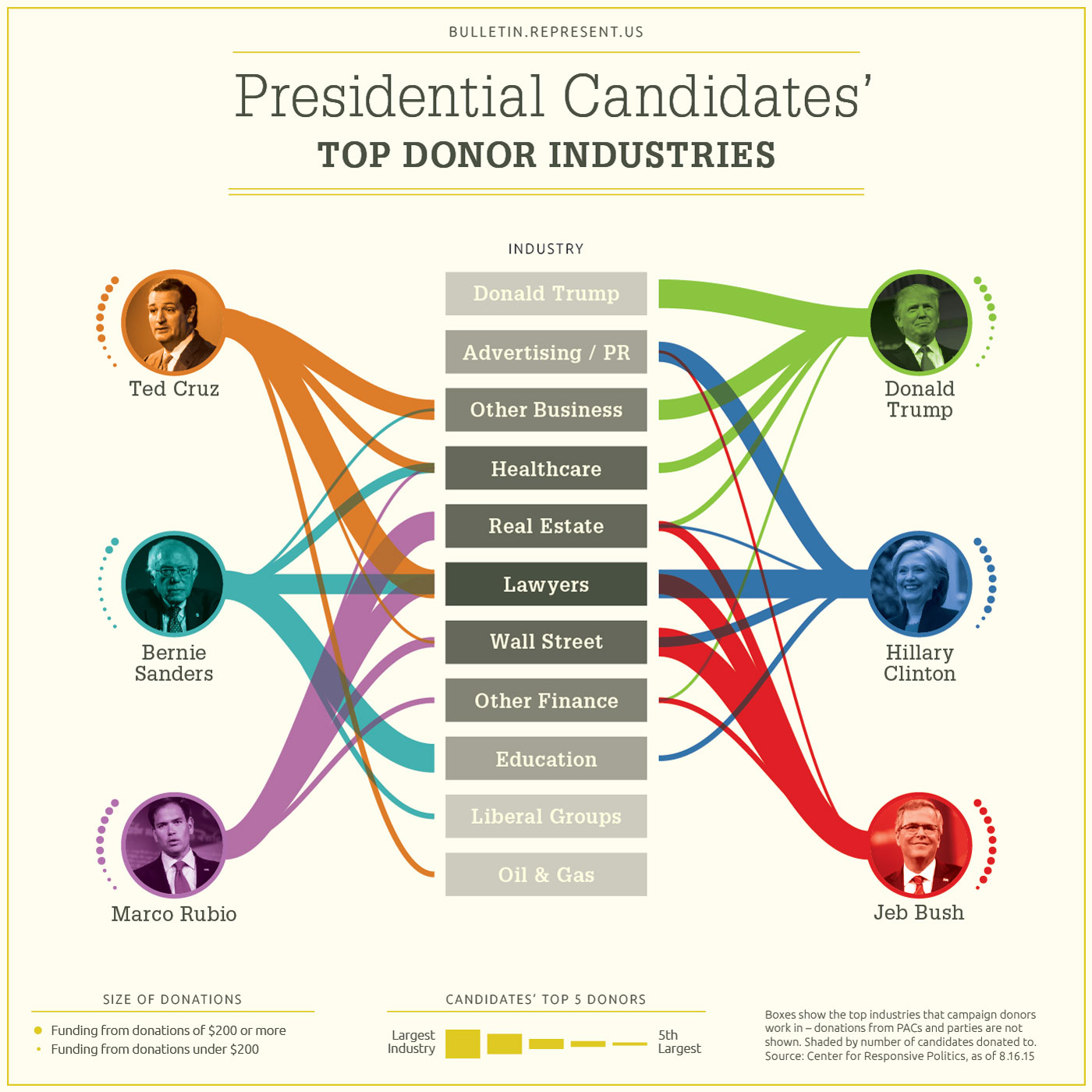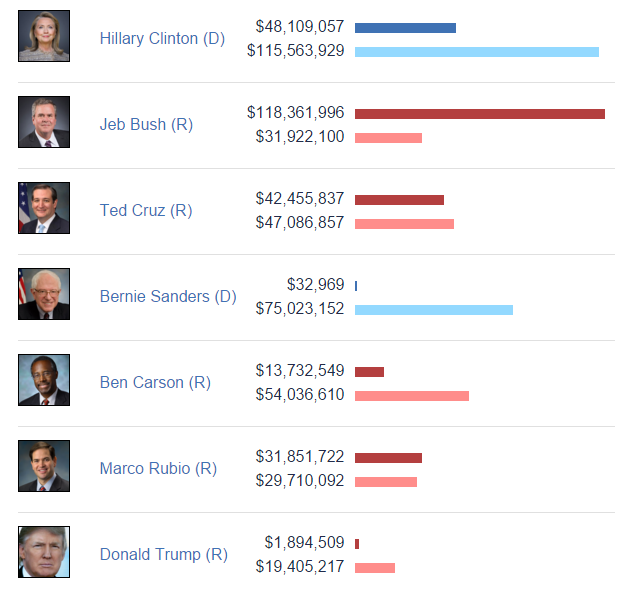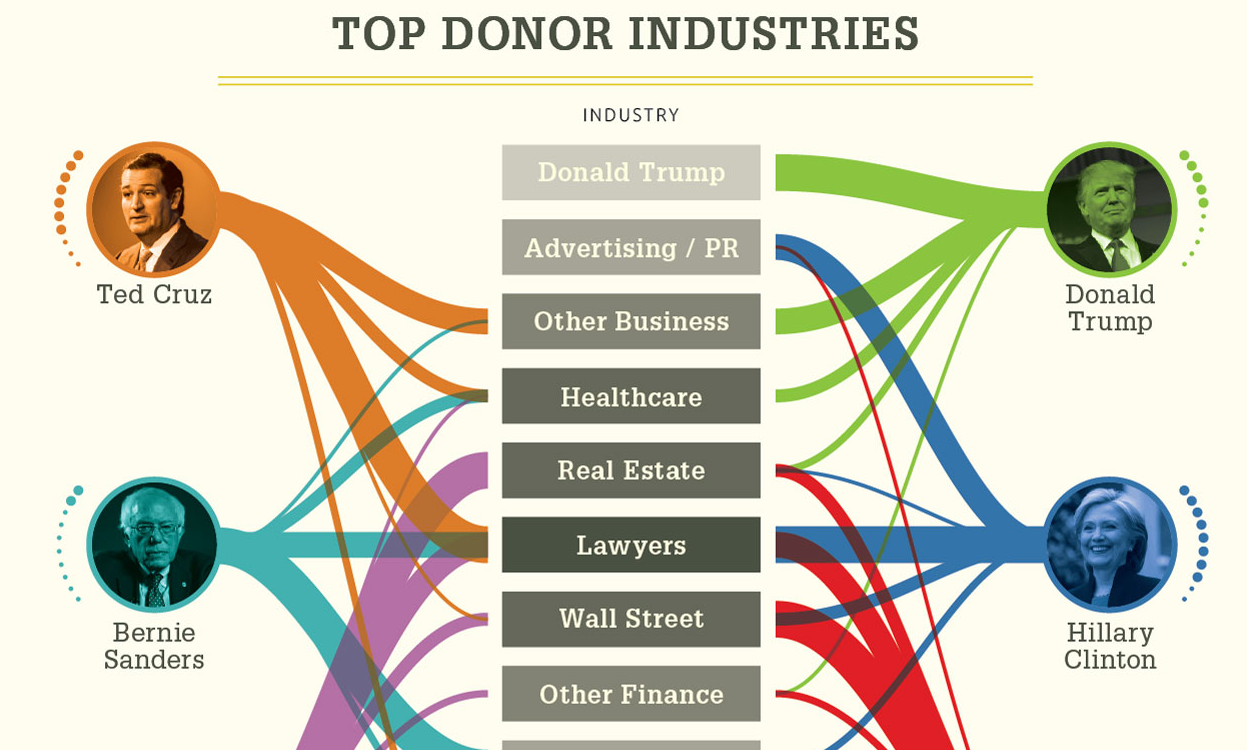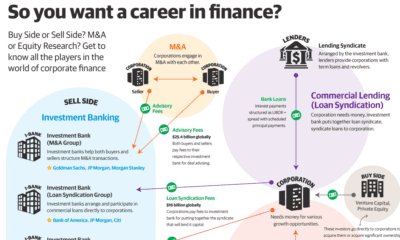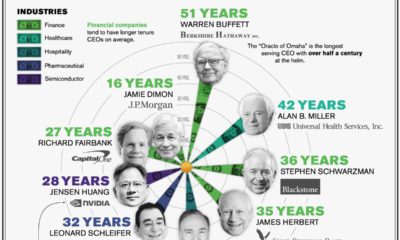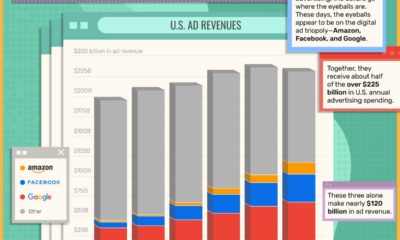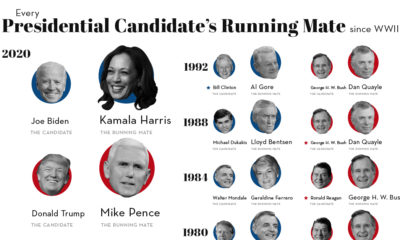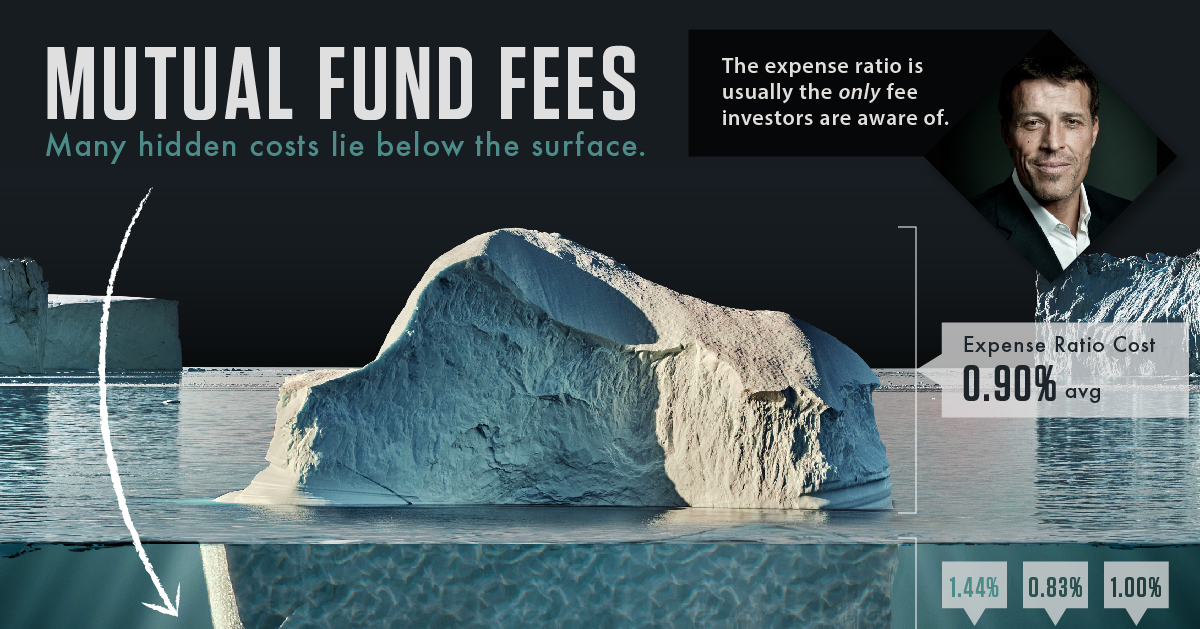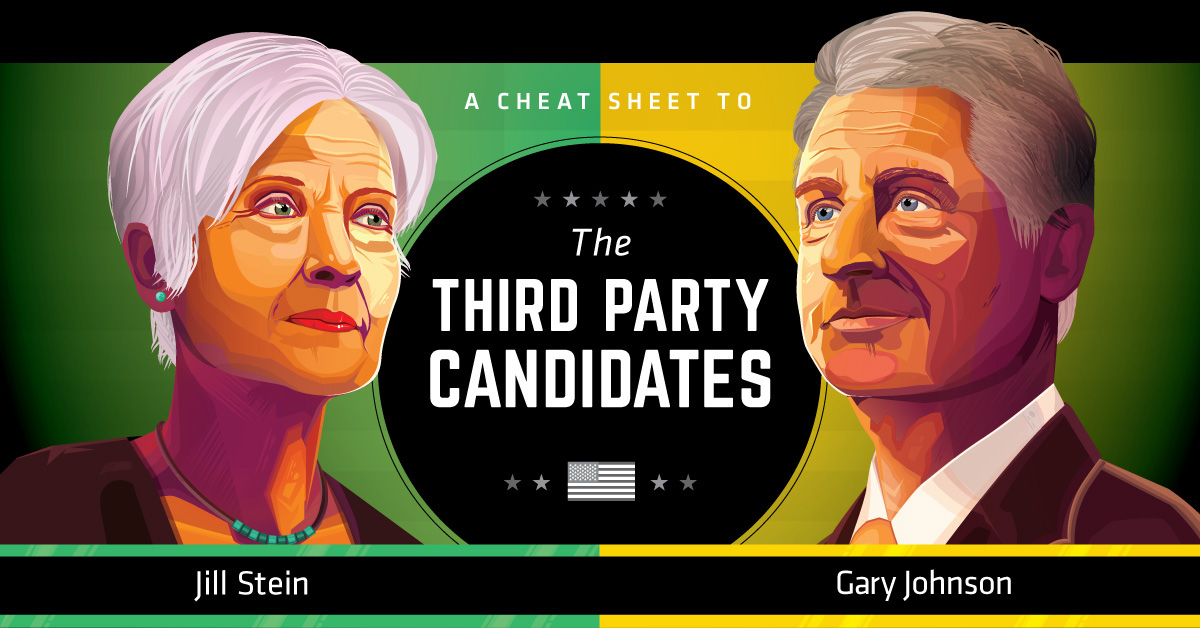Whether we are talking about the Boston Red Sox, the Montreal Canadiens, or the Dallas Cowboys, all aspects of team apparel are designed to represent the essence and history of the team. Jerseys are for the team and fans, and not for the advertisers that want to cover every square inch of material with sponsors. However, not all North American sports can make this claim. In fact, some sports like NASCAR take the exact opposite approach: they let each racing team cover their car and apparel with as many ads as possible, and allow this to be part of their income. While it is horrendous from a visual perspective, at least there is a sort of brutal honesty with it all. It’s obvious that each racer is bought and sold by sponsors, and it’s clear exactly who those advertisers are.
Racing for Presidency
Dan Carlin from the Common Sense podcast frequently mentions that it would be great to live in a world where all politicians had to wear NASCAR-like uniforms displaying the logos of their financial supporters. Can you imagine if each time Hillary Clinton or Marco Rubio gave a speech, a Goldman Sachs crest was embedded on the shoulder of each outfit?
Today’s infographic comes to us from Represent.us, and it shows the top donor industries for the major presidential candidates still in the race. In the graphic, the top five industry fundraising sources are indicated for each candidate. They are ranked from #1 to #5 based on the amount of money raised, and the width of each connection is based on this information.
Note: in this case, we are looking at the industries of individual campaign donors, and corporate or individual donations to Political Action Committees or the parties themselves are not included in this summary. So, who were the biggest campaign contributors? It’s no surprise to see that Wall Street has been extremely influential in donations. More specifically, Wall Street donated most to those representing the establishment, such as Clinton, Bush, and Rubio. The other major donors came from industries such as law and real estate. Lawyers gave heavily to Clinton, Rubio, Sanders, Cruz, and Bush, and the real estate industry gave mainly to Rubio and Bush.
Campaign Funding to Date
How much have candidates raised to date? Here’s a recent roundup of that data from the Center for Responsive Politics. The darker bar coincides with “outside money” including conventional party committees as well as the more controversial super PACs and 501(c) “dark money” organizations. The lighter bar represents money that has gone directly to campaigns.
on Even while political regimes across these countries have changed over time, they’ve largely followed a few different types of governance. Today, every country can ultimately be classified into just nine broad forms of government systems. This map by Truman Du uses information from Wikipedia to map the government systems that rule the world today.
Countries By Type of Government
It’s important to note that this map charts government systems according to each country’s legal framework. Many countries have constitutions stating their de jure or legally recognized system of government, but their de facto or realized form of governance may be quite different. Here is a list of the stated government system of UN member states and observers as of January 2023: Let’s take a closer look at some of these systems.
Monarchies
Brought back into the spotlight after the death of Queen Elizabeth II of England in September 2022, this form of government has a single ruler. They carry titles from king and queen to sultan or emperor, and their government systems can be further divided into three modern types: constitutional, semi-constitutional, and absolute. A constitutional monarchy sees the monarch act as head of state within the parameters of a constitution, giving them little to no real power. For example, King Charles III is the head of 15 Commonwealth nations including Canada and Australia. However, each has their own head of government. On the other hand, a semi-constitutional monarchy lets the monarch or ruling royal family retain substantial political powers, as is the case in Jordan and Morocco. However, their monarchs still rule the country according to a democratic constitution and in concert with other institutions. Finally, an absolute monarchy is most like the monarchies of old, where the ruler has full power over governance, with modern examples including Saudi Arabia and Vatican City.
Republics
Unlike monarchies, the people hold the power in a republic government system, directly electing representatives to form government. Again, there are multiple types of modern republic governments: presidential, semi-presidential, and parliamentary. The presidential republic could be considered a direct progression from monarchies. This system has a strong and independent chief executive with extensive powers when it comes to domestic affairs and foreign policy. An example of this is the United States, where the President is both the head of state and the head of government. In a semi-presidential republic, the president is the head of state and has some executive powers that are independent of the legislature. However, the prime minister (or chancellor or equivalent title) is the head of government, responsible to the legislature along with the cabinet. Russia is a classic example of this type of government. The last type of republic system is parliamentary. In this system, the president is a figurehead, while the head of government holds real power and is validated by and accountable to the parliament. This type of system can be seen in Germany, Italy, and India and is akin to constitutional monarchies. It’s also important to point out that some parliamentary republic systems operate slightly differently. For example in South Africa, the president is both the head of state and government, but is elected directly by the legislature. This leaves them (and their ministries) potentially subject to parliamentary confidence.
One-Party State
Many of the systems above involve multiple political parties vying to rule and govern their respective countries. In a one-party state, also called a single-party state or single-party system, only one political party has the right to form government. All other political parties are either outlawed or only allowed limited participation in elections. In this system, a country’s head of state and head of government can be executive or ceremonial but political power is constitutionally linked to a single political movement. China is the most well-known example of this government system, with the General Secretary of the Communist Party of China ruling as the de facto leader since 1989.
Provisional
The final form of government is a provisional government formed as an interim or transitional government. In this system, an emergency governmental body is created to manage political transitions after the collapse of a government, or when a new state is formed. Often these evolve into fully constitutionalized systems, but sometimes they hold power for longer than expected. Some examples of countries that are considered provisional include Libya, Burkina Faso, and Chad.
